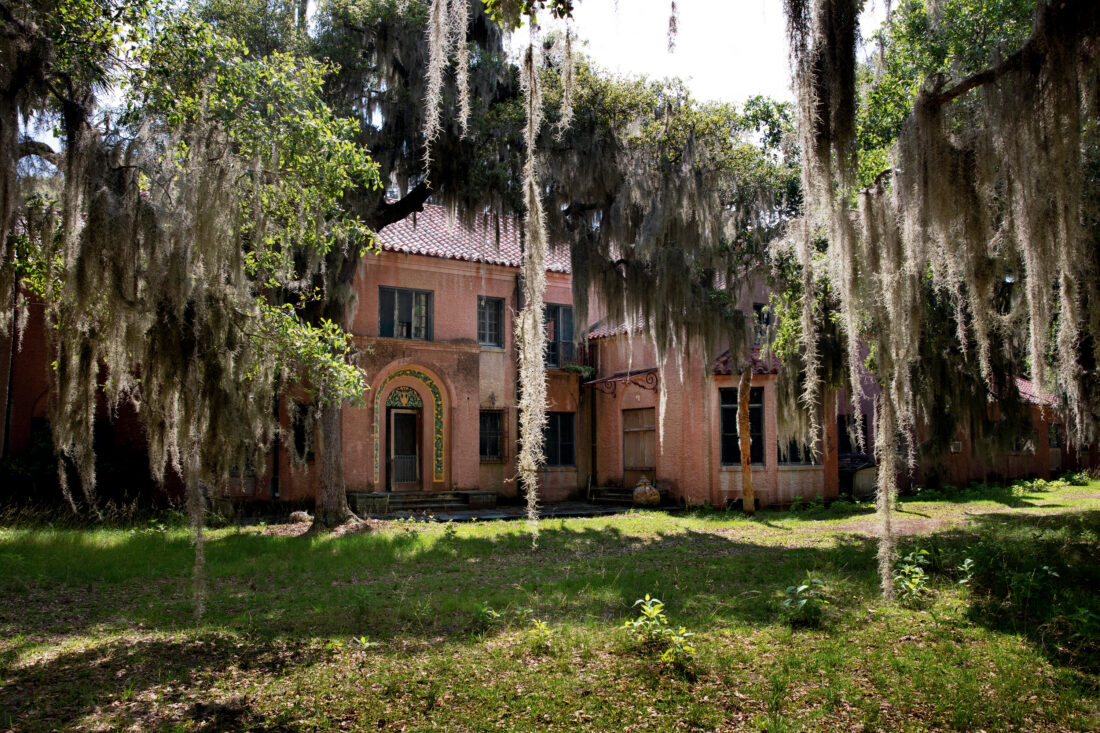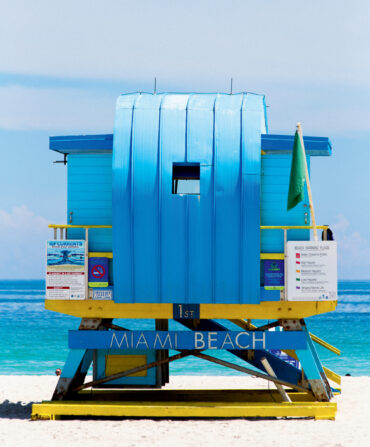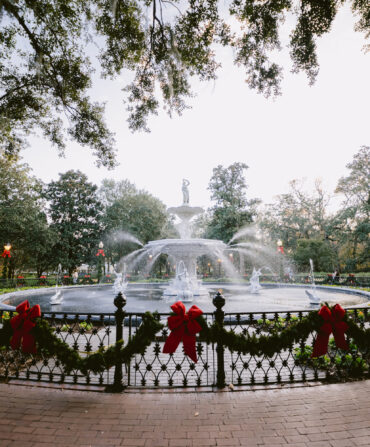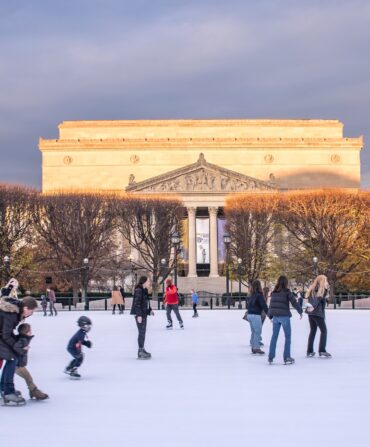In 1978, when she was in her sixties, Eleanor “Sandy” Torrey West, the owner of Georgia’s third-largest barrier island, reluctantly sold it. But she was canny: She negotiated for herself a life estate, which allowed her to continue to live in the 1926 Spanish Colonial Revival mansion her family had built on Ossabaw. I’m betting whoever drew up the document imagined they might soon get their hands on that mansion—but the spry West lived for four more decades, dying on her 108th birthday. I’ve heard it said that she died at the stroke of midnight, which might be a tall tale.

But Ossabaw is the kind of place that makes you believe in tall tales. A heart-shaped island, uninhabited—well, with one exception; more on him later—and with astonishing natural beauty, it’s ecologically diverse, teeming with wildlife, and banded by deep sandy beaches with fantastical driftwood that reads like installation art. Located just twenty minutes south of Savannah but accessible only by boat, Ossabaw doesn’t grow on you: It sets its hooks the minute you step ashore, as it did for me when my husband and I were invited to teach at the Ossabaw Island Writers’ Retreat, a six-day gathering that includes workshops and faculty readings.
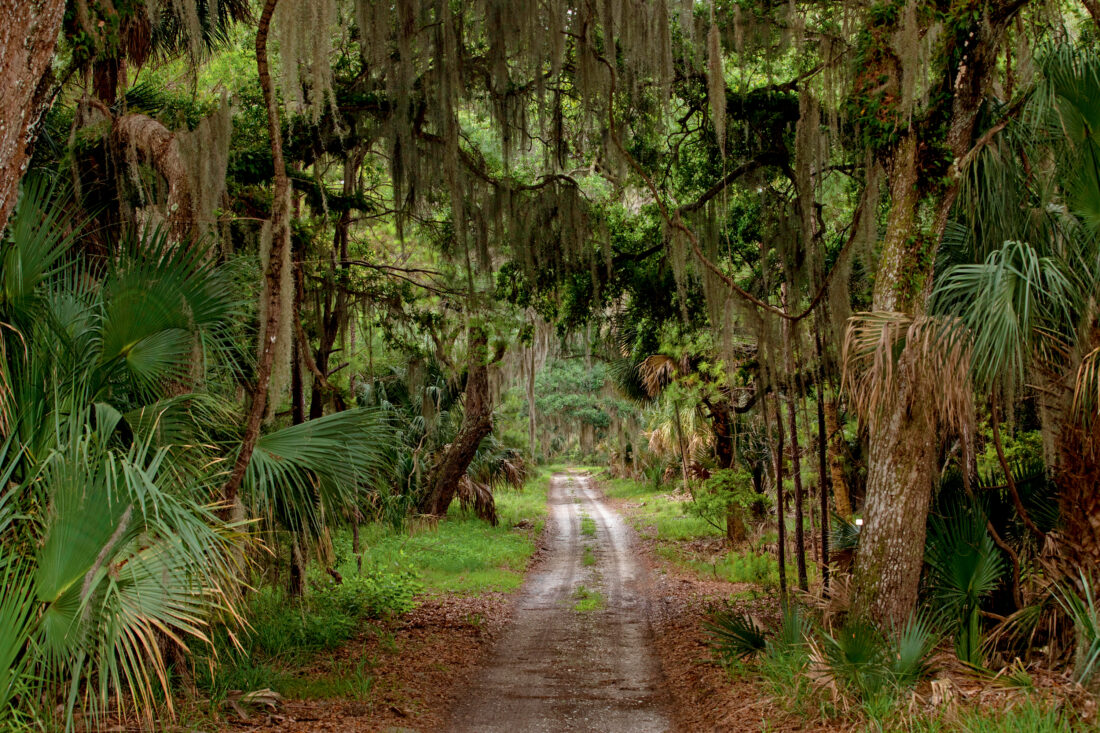
The blue-eyed boat captain and former marine educator who shuttled us to the island, Fran Lapolla—not unreminiscent of Ernest Hemingway—stayed on as a nature guide. After mornings of writing and talking about writing, the group piled into the bed of his truck and rumbled down the ancient paths carved by early Native peoples. The arching oaks dangled Spanish moss that laved the truck like a car wash. We came upon a drove of miniature Sicilian donkeys—the breed West brought to the island in the 1960s—and shared our apples with them. Afterward, one donkey named Mary Helen loped behind us wearing a boa—a garland of Spanish moss—with her muzzle to the truck’s tailpipe, huffing exhaust. After several good snorts, she gave an ecstatic shiver, dropped to the dirt, and rolled on her back, the world’s cutest junkie.
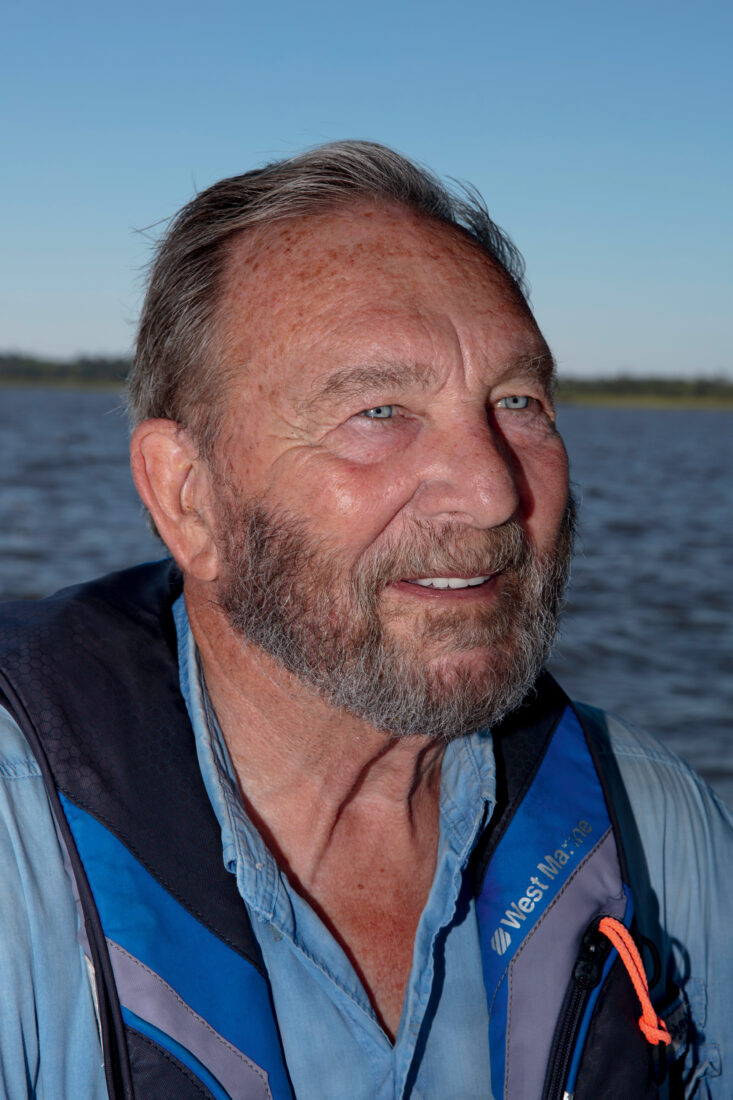
Captain Fran narrated as he hauled us through grassy wetlands bisected by waterways. In a single outing, we saw great egrets in their breeding plumage, night herons, tricolored herons, great blue herons, coots, a pair of bald eagles, ospreys, wood storks, and cloudless sulphur butterflies. Throw in the omnipresent donkeys, alligators, snakes, and hogs, and Ossabaw beats any drive-through safari. For weeks after returning to my Mississippi home, the island dominated my dreams: the rattle of palmetto fronds, the eggy smell of pluff mud, the warm muzzle of a donkey chomping an apple from my hand. How did this place come to be? I had to find out, and courtesy of the books Images of America: Ossabaw Island, by Ann Foskey, and The Woman Who Saved an Island: The Story of Sandy West and Ossabaw Island, by Jane Fishman, I did.

West’s wealthy industrialist family, craving a winter escape from their Grosse Pointe, Michigan, mansion, had purchased Ossabaw in 1924, when she was a child. They’d take the train to Savannah yearly for a few months of sport hunting and pleasure boating, their household staff following on a barge with the luggage, the chauffeur driving down in the mother’s Packard with their pet parrot. West grew up riding her horse all over the ten-mile island, exploring its salt marshes and maritime forests (one massive oak is estimated to be seven hundred years old), entranced by the star-bedazzled night skies.
By the time West hit adulthood, she wasn’t content to live as a socialite snowbird but had developed a steward’s passion for the island, eventually moving there full time. She and her husband became intent on sharing its magic with others (including the eleven donkeys she adopted from a former breeder in South Carolina). They hosted cross-disciplinary gatherings of artists and scientists, with composers such as Aaron Copland and Samuel Barber and literary luminaries such as Annie Dillard, Alice Walker, and Margaret Atwood convening at their table.
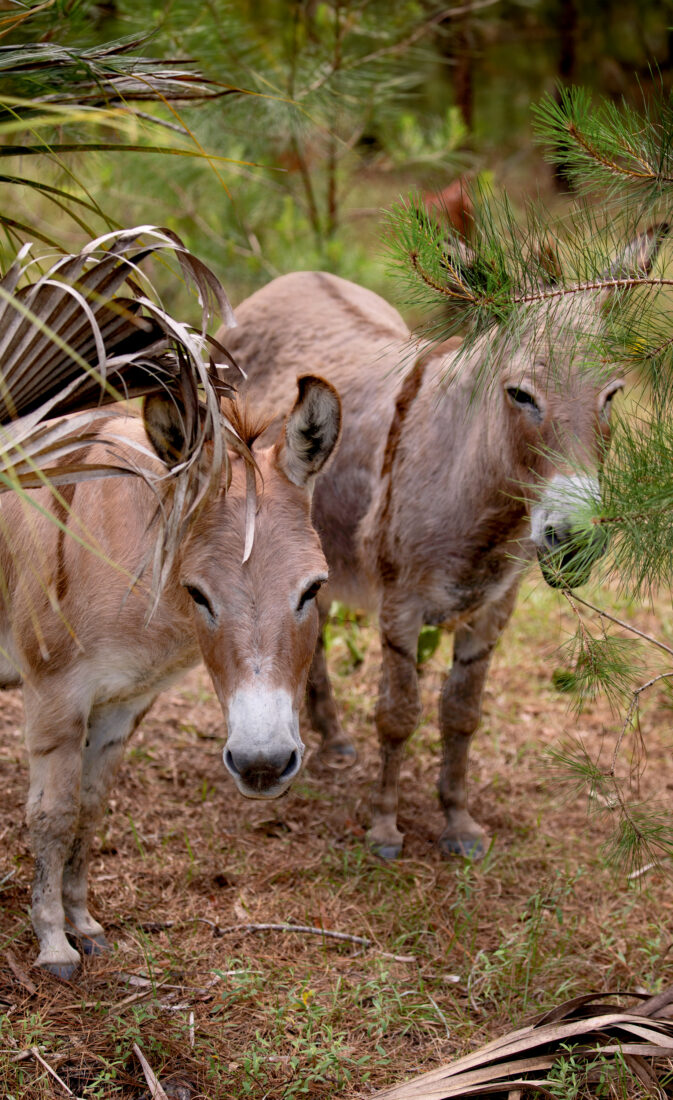
But all that hosting wasn’t cheap, and a property reassessment resulted in spiking taxes that the heiress turned conservationist couldn’t afford. Word got out and bids poured in. If West had accepted Jackie and Aristotle Onassis’s offer, it’s safe to imagine the island would now be a gated enclave of the megarich. If she’d caved to developers, Ossabaw might be short on donkeys and long on dollar stores. Instead, in 1978, she struck a hard bargain—one partially negotiated by then president Jimmy Carter. She’d sell Ossabaw to Georgia at half its estimated worth, but only if it could become the state’s first Heritage Preserve—which meant no airfield, no bridges. Overnight guests must obtain approval from the Ossabaw Island Foundation, and be visiting in service of “natural, scientific, and cultural study, research and education, and environmentally sound preservation.” And West got to stay put, which she did until she was 103, only then moving off the island for health reasons.
West’s decree continues to protect the island’s storyline: Human habitation there stretches back five thousand years, as evidenced by the oyster shell middens left over from Native American feasts—“basically, trash heaps,” said Captain Fran, who pointed out the remains of a midden beside a tidal creek on my visit. Another mound, called the Bead Maker’s, contains whelk shells and the tools used to fashion them into beads. By the early 1500s, the Guale people lived on Ossabaw. Spanish explorers disrupted their peaceful farming lifestyle and forced the Guale to provide food for their mission at St. Augustine, Florida. Colonialism left a strange legacy: the Ossabaw hogs, descended from Spanish stock. These hogs roam—well, maraud—the island to this day, their sharp hooves damaging the dunes as they gobble up eggs of endangered loggerhead turtles.

British colonization began in the 1700s, and the island had a series of owners who cut timber with slave labor. In an ironic twist, the four plantations that quartered the island are gone, but three tabby cabins constructed by enslaved African Americans prior to the Civil War remain. It’s largely thanks to these cabins—hand built with tabby, which is oyster shells packed into a kind of cement with sand, lime, and water—that the island was named to the National Register of Historic Places. The cabins were later occupied by the enslaved people’s children and grandchildren, who remained on the island as tenant farmers. Beyond the cabins, which are open to the public, and the Torrey-West mansion, which isn’t (at least not until major restoration work is done), there are few human-made structures. Two buildings, booked through the foundation, house overnighters (not counting the Boy Scouts who pitch tents): an 1880s clubhouse with bunk beds, and a 1918 boardinghouse built for the “kennel man” who cared for the owner’s hunting dogs.
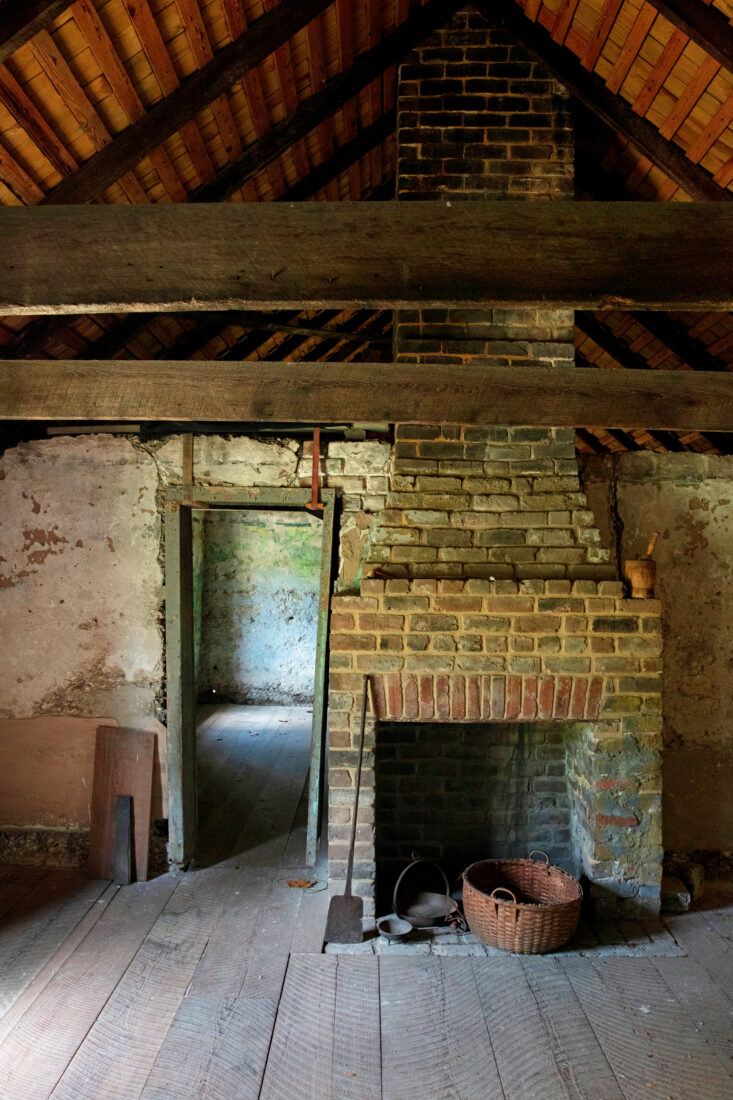
With so few human-made structures, and so few humans, it’s possible to walk the beach for as long as your legs can hold and not see another soul. Unless, that is, you happen to spot the aforementioned lone inhabitant, Codey Elrod, bombing past in his Georgia Department of Natural Resources truck. Elrod accepted a summer job between semesters of college when he was twenty (“too young to buy beer”) because he could get paid to do his favorite activity—hunt. And the hunting was so good that he never returned to school.
For the past fifteen years, he’s kept the feral hog population in check. “They’re like cockroaches,” he says, “and there’s no bag limit.” From May to September, loggerhead breeding season, Elrod is nocturnal, guarding the four beaches, looking for turtle tracks to locate and protect their nesting spots. When he succeeds, sixty days later the hatchlings—“big as half-dollars in a hurry”—emerge and scramble into the sea.
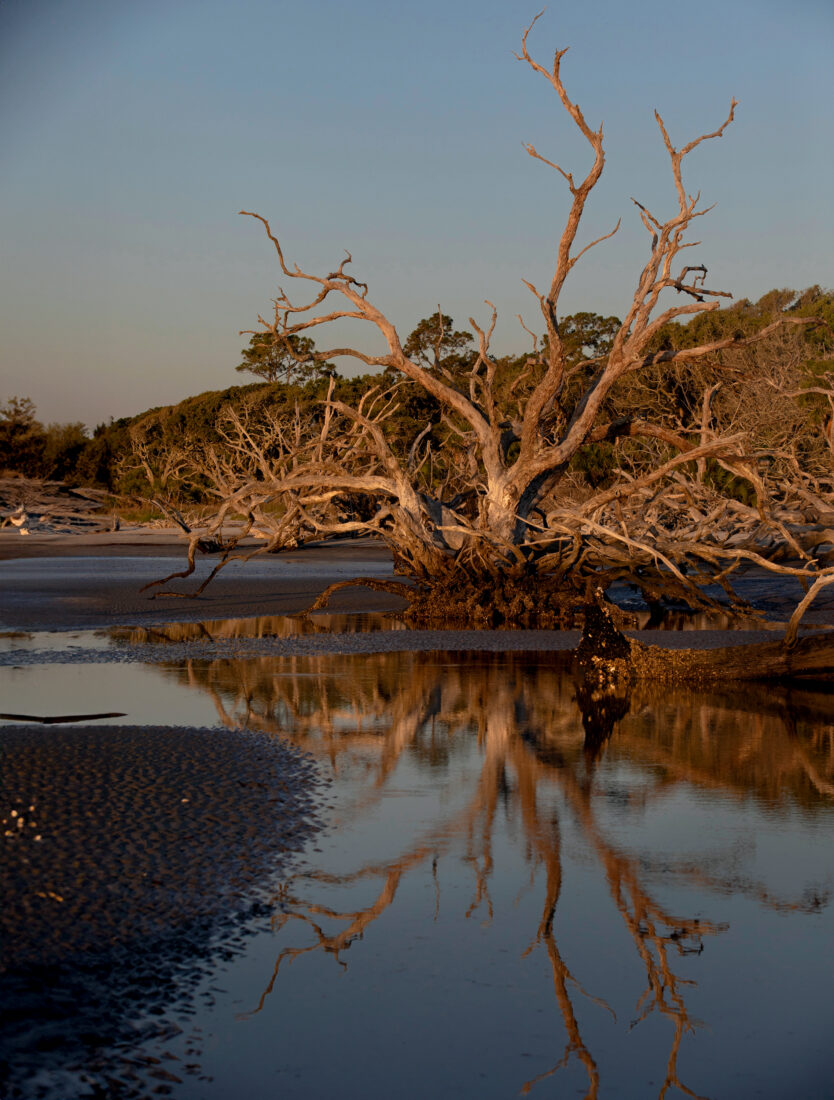
In his clarity of mission, Elrod might have been sent to the island by Sandy West herself, squinting down from heaven to see that her ten-mile heaven on earth remains protected. If she is, I hope she finds pleasure in what her foresight—and stubbornness—achieved. As stubborn as a mule, some might say. As stubborn as a donkey, more like it.
Getting There
Tips for visiting Ossabaw
The easiest way to visit the island is via the day trips hosted roughly once a month by the Ossabaw Island Foundation. Offerings include indigo dyeing workshops, historical walking tours, and cultural trips. The Turtle Hatching event in August invites participants to accompany Georgia Turtle Conservation Program interns as they inventory loggerhead nests—last year there were 22,063 sea turtle hatchlings.
If you’re looking to arrange your own plans, the foundation’s website shares guidelines to planning a day trip or an overnight. Folks with boats can anchor and enjoy the beach from sunup to sundown, but visitors aren’t allowed past the high tide mark. Boat charters are also available, such as Savannah Coastal EcoTours with Captain Fran Lapolla.


